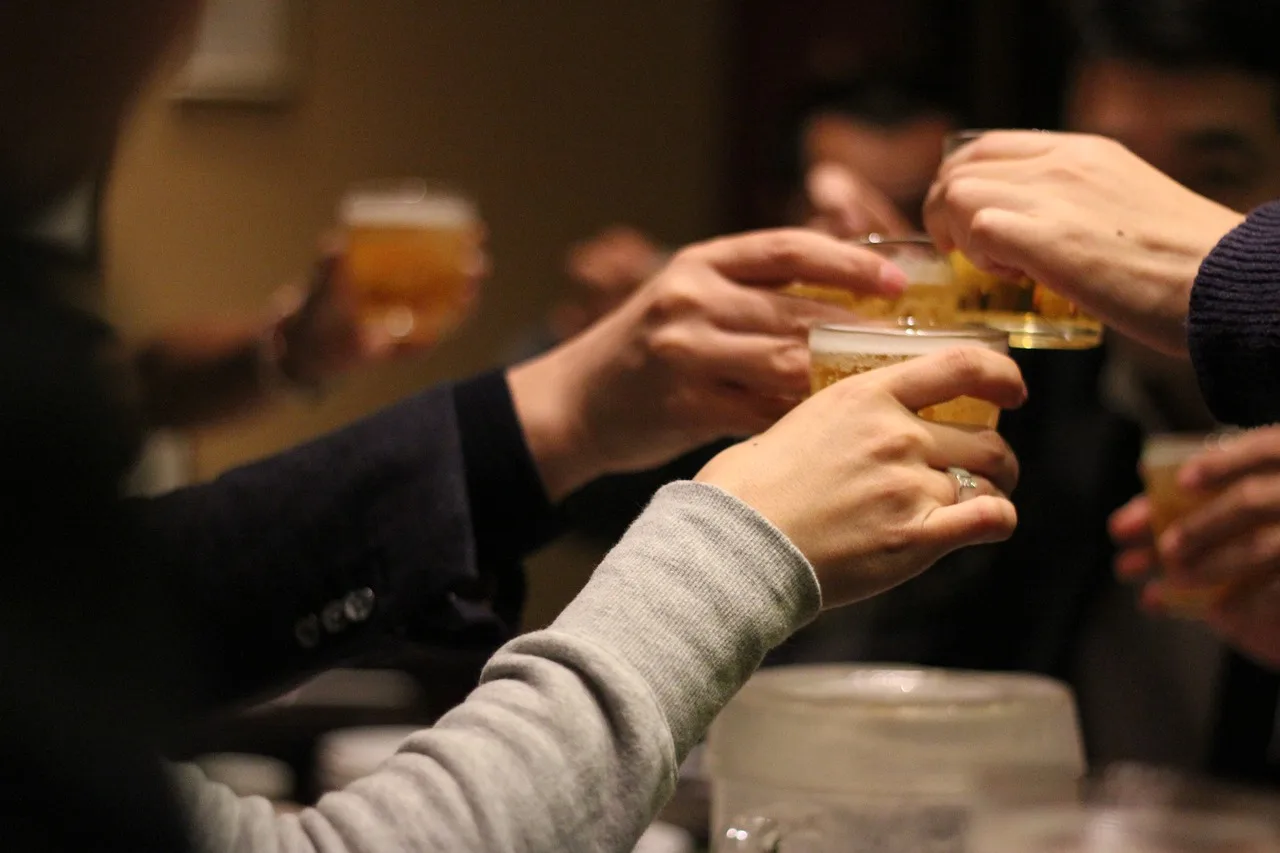Konnichiwa! Let’s examine Japanese toasts and explore how to say “cheers” in Japanese. So, raise your glasses and join me in uncovering the art of toasting in Japanese!
Kanpai: The Universal Cheers
When it comes to raising a toast in Japan, the most widely known and used word is “kanpai.” It’s the equivalent of “cheers” and carries the same festive spirit and camaraderie.
“Kanpai” is a versatile phrase that can be used in various settings, whether you’re clinking glasses with friends, family, or colleagues. It’s a joyful expression that signifies a shared moment of celebration and good wishes.
Pronounce it with enthusiasm and a spirited tone: “con-pie!” (con like a convict and pie like the food). Let the energy of the word ignite the atmosphere and set the tone for a memorable gathering.

Planning a trip to Japan?
Ganbei: The Traditional Toast
In more formal or traditional settings, you might come across the word “ganbei” when raising a toast. This term is deeply rooted in Japanese culture and represents a heartfelt and spirited salutation.
“Ganbei” literally translates to “dry the cup” and is a call to empty your glass in one gulp, a symbol of unity and camaraderie. It signifies a shared commitment to enjoy the moment and create lasting memories.
When saying “ganbei,” hold your glass high, make eye contact with your fellow toasters, and exclaim the word with gusto: “gan-bay!” Let the sound reverberate through the room, uniting everyone in a collective toast.
Etiquette: Navigating the Toasting Culture
As we explore the art of saying “cheers” in Japanese, it’s important to be aware of the cultural nuances and etiquette that accompany toasting. Embracing these customs will enhance your celebration and show respect for Japanese traditions.
First and foremost, when clinking glasses with others, it’s customary to hold your glass lower than the person of higher social status or age as a sign of respect. This simple gesture demonstrates your understanding of hierarchical relationships and your commitment to showing deference.
When toasting, make eye contact with each person you clink glasses with, and if possible, tilt your glass slightly lower than theirs. This shows sincerity and creates a personal connection as you share the celebratory moment.
Cultural Considerations: Respect and Gratitude
In Japanese culture, toasting is not just about the act of raising a glass—it’s an opportunity to express respect, gratitude, and good wishes. Understanding a few cultural nuances will deepen your appreciation for the significance of toasting in Japan.
One important custom to note is the tradition of not pouring your own drink. In a social setting, it’s customary for others to pour your drink, and in turn, you pour theirs. This act of mutual pouring symbolizes care, hospitality, and the spirit of togetherness.
Additionally, expressing gratitude and appreciation during a toast is highly valued. Take a moment to express your heartfelt thanks for the company, the occasion, and the joyous atmosphere. Let your words reflect your genuine appreciation and add warmth to the celebration.
Conclusion: Toasting to a Joyful Journey
Congratulations! You’re now equipped with the knowledge to raise a glass and say “cheers” in Japanese. How to say “cheers” in Japanese? Kanpai! From the lively “kanpai” to the spirited “ganbei,” you have the phrases to create a festive atmosphere and share in the joy of the moment.
Remember to pronounce the words with enthusiasm and embrace the customs of holding your glass lower and making eye contact during the toast. These gestures of respect and connection will enrich your experience and deepen your cultural understanding.
Kanpai! Ganbei! Let the spirit of celebration and camaraderie guide your toasts, and may each clink of glasses bring you closer to those around you. Cheers to the memories you’ll create, the laughter you’ll share, and the joy that fills your heart.
Here’s to a joyful journey filled with memorable toasts and unforgettable experiences. Kanpai! Ganbei! Cheers to a life well celebrated!

